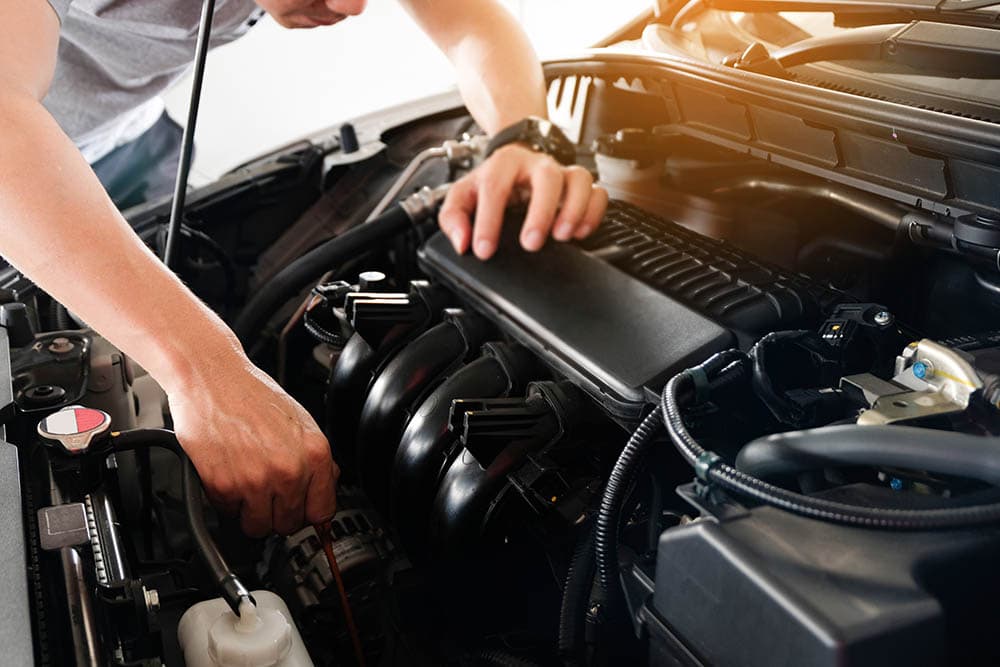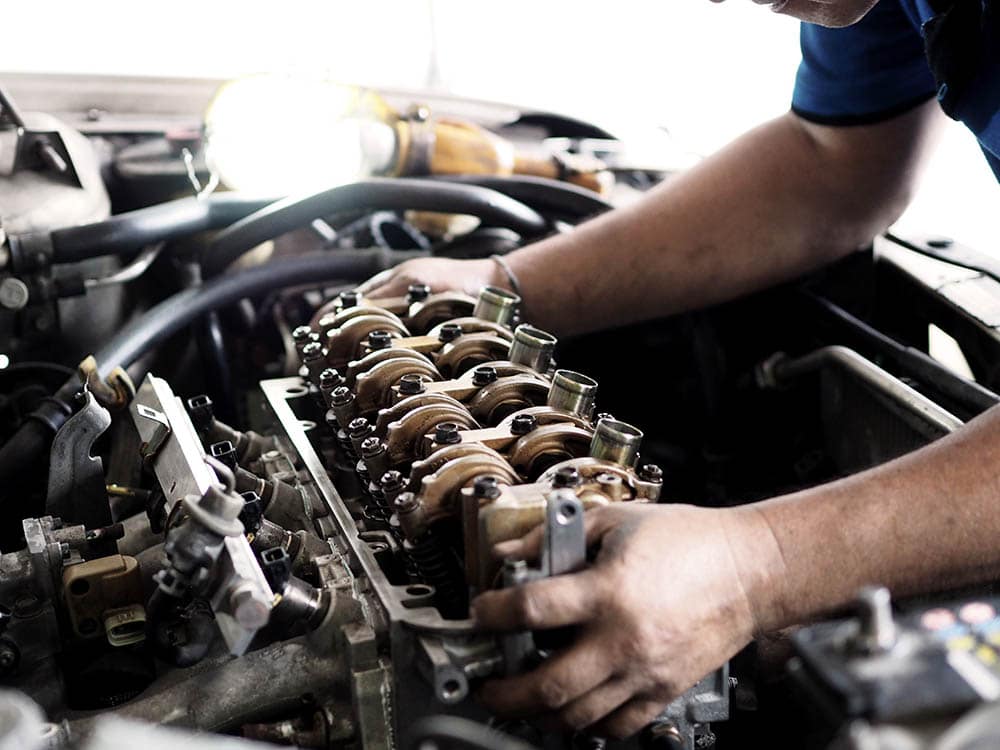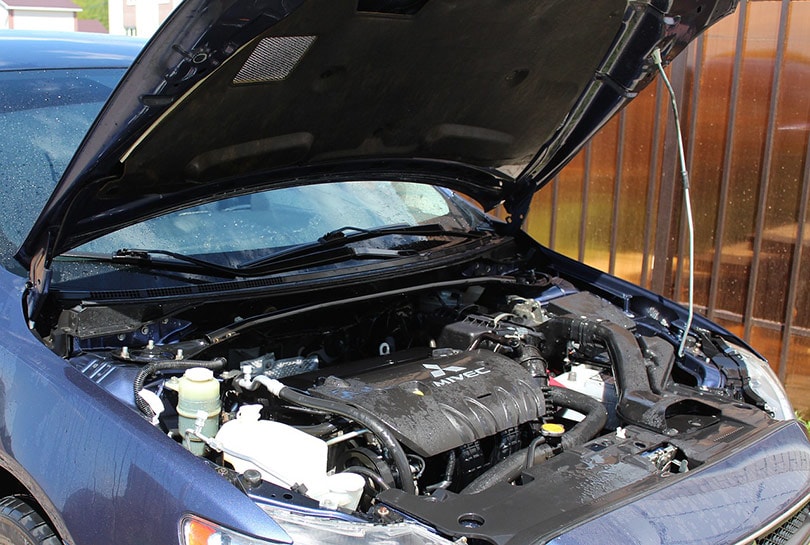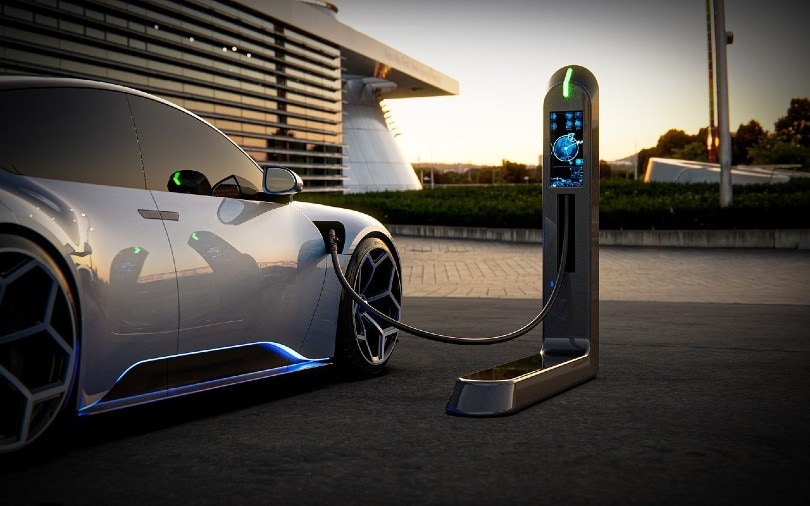What Does Liter Mean in an Engine? Grades, Sizes & Factors
-

- Last updated:

As a prospective car buyer, you have probably seen several ads in magazines and online shopping platforms promoting the sale of cars. When mentioning the engine size, the manufacturers always present the value in liters, and most people are always confused as to the reason behind it. The “L” in engine size refers to the total amount of liters of air displaced in a car on a full cycle of the pistons. Engine Displacement is also expressed in Cubic Centimeters (CC).
Besides affecting the car’s performance, the number of liters in a car will also affect taxes, maintenance, registration costs, insurance premiums, and fuel efficiency. Therefore, you must familiarize yourself with all the necessary information concerning engine displacement in a car before making a purchasing decision. Read on to learn the various engine grades in the market and who they are best suited for. We will also highlight what to consider when choosing a car engine size.
The 6 Engine Grades Available
Whether you are looking for a car to assist in your daily commute to work, a car taxi to ferry people around from one point to the next, or you simply want one to carry out weekend errands, it is important to know what size engine you need in your car. Of course, there are several factors that you need to put into consideration before buying a car. These include your carbon footprint, performance, and fuel economy.
Here are the various engine grades available based on displacement and who they are best suited for:

1. 1.0–1.2-Liter Engines
These are basically the smallest engines and can be found in the smallest car models on the market. You can expect to find 1.0–1.2-liter engines in city cars like the Volkswagen Polo or Toyota Ago. These cars do not produce as much power, but can be quite fast if they don’t weigh very much.
Due to their small engine capacity, they do not consume as much fuel as larger cars. This makes the car especially suitable for city life where you must start and stop frequently at traffic lights. This engine size is also ideal for short journeys.
Their small engine size also means that you get lower emissions. Fortunately, you can sacrifice power with a bigger engine, which is often the case when the economy you get on the highway is not satisfactory. So, your smaller engine has to work twice as hard to keep the speed up. This car is ideal for running shopping errands around town or dropping children off and picking them up from school.
2. 1.4–1.6-Liter Engines
If you are the kind of person who enjoys the feeling of power beneath your feet, or you often combine short trips and journeys along the motorway, you might enjoy owning or driving 1.4–1.6-liter engines. In terms of fuel efficiency, they are pretty good, meaning you don’t have to keep stopping at a gas station every other time to refill the fuel tank.
For many years, these engines have been very popular among car enthusiasts. However, car brands like Audi have been working on a new range of 1.5-liter engines, which are set to be the new standard engine size within this unit grade.

3. 1.8–2.0-Liter Engines
You should expect 1.8–2.0-liter engines to have more power than the previous two categories. However, their slightly bigger engine capacity doesn’t always have a major impact on fuel economy. Also, despite popular belief, having a bigger engine doesn’t always necessarily mean that it will be costlier to run and maintain them.
Such engines are perfect for those who do a lot of driving on the motorway. Two-liter models are also popular for business car owners who cover lots of miles daily. Cars such as the Mercedes E class saloon and BMW 3 Series Saloon are popular business-class cars that provide a comfortable driving experience. This engine grade is not suitable if you frequently start and stop around town as you go about your daily routine.
4. 2.2–3.0-Liter Engines
Most 2-liter car engines may be great for towing, but anything else above this level is suitable for hauling heavy caravans or trailers. These vehicles can produce a lot of torque and power and will provide a smooth driving experience when pulling extra weight, which would have otherwise overwhelmed smaller-capacity engines. This category is often common in performance and sports cars and offers an exciting ride that is louder and throatier.

5. 3.5-Liter Engines and Above
Any car that can handle 3.5 liters and above is capable of impressive performance. These cars are best suited for those car enthusiasts looking for some serious power in their engines. Vehicles like the high-end Mercedes AMG C63 Coupe pack a robust 4.0-liter Biturbo V8 power unit that can give most cars on the road a run for their money.
A bigger engine will give you a powerful performance as seen with the 4-liter car models. If working with an unlimited budget, you can even go a step further and get the W16 8.0-liter engine, like the one found on Bugatti Chiron. An 8-liter engine will give you a mind-blowing performance that you are not likely to ever forget.
6. Electric Motor vehicles
For the last few decades, car manufacturers have been trying to come up with vehicles with better fuel efficiency and performance that do not negatively affect the environment. Therefore, most of them aim to eradicate petrol and diesel cars from the road by 2030, in favor of fully electric cars or plug-in hybrid models (PHEV).
PHEV cars usually combine diesel/petrol engines with an electric motor, which you can charge whilst you drive or plug into a power socket. These cars can provide a range of 70 miles if used for shorter trips if only electrically charged. You can also opt to use the combustion part of the engine for longer journeys.
On the other hand, pure electric cars only use an electric motor to achieve motion. If electric cars tickle your fancy, there are a lot more options and technological upgrades to choose from.

What to Consider When Choosing the Engine Size of Your Car
- Operating Costs: Basically, larger engines will consume more fuel and produce emissions. More emissions translate into more expenses in terms of tax and insurance premiums. If you plan to get a car with minimal operating costs, 1.0-liter, turbo-charged engines would be ideal for you. Longer journeys will require bigger and more powerful engine/petrol engines because they consume less fuel. In addition, insurance premiums tend to be lower for smaller engine cars, too, although this will vary with the car model.
- Motorway Driving: If you drive a lot on motorways, consider going for a mid-sized diesel engine. These cars offer great fuel economy and an edge, especially when overtaking while on the motorway.
- Town Driving: Smaller engine cars are best suited for driving around towns or major cities. They may not have as much power as you may want, but they are significantly easier to run and maintain.
- Speed: Are you a speed junky? If yes, then you will want to purchase something with a larger engine capacity and a higher power output. However, most fast cars are usually expensive, so you better be prepared to break your bank.
In Conclusion
If you have read or heard about automotive terms such as 2.4-liter, engine displacement, or cubic centimeters, they all refer to the engine size of a car. Engine size is determined by the volume available in engine cylinders where a mixture of air and fuel are ignited to create motion. The total volume of all the cylinders in an engine is usually given in liters.
The engine size matters because it affects performance, insurance premiums, fuel consumption operating costs, and the value of the car. Larger engines are more powerful, have more emissions, and thus are more expensive. They are best suited for motorway driving and long journeys.
Smaller engines, on the other hand, have fewer emissions, are fuel efficient, and are cheaper, but they do not offer enough torque as some people would prefer. Thus, smaller-engine vehicles are suited for short-distance driving, especially around towns and cities.
However, size doesn’t matter today as before because engineers have been coming up with new methods of extracting more power from an engine while using less fuel. Therefore, electric cars have been gaining traction in the automotive community. Either way, you need a basic understanding of the different engine sizes to get a car that suits your needs and preferences.
Featured Image Credit: Me dia, Shutterstock
Contents

